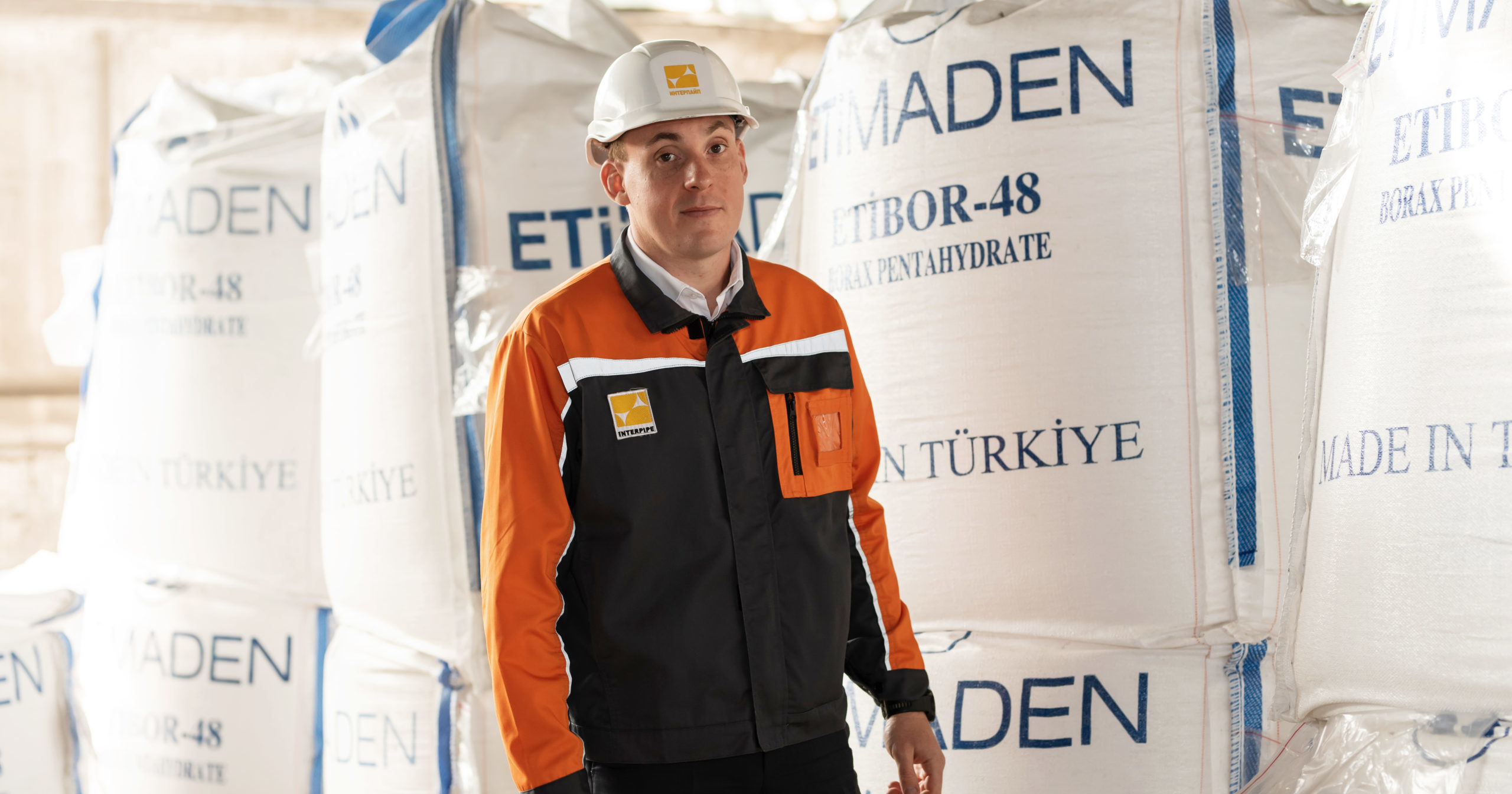
Interviews Interpipe 12309 17 April 2024
The Ukrainian industrial company — an exporter of steel pipes and railway products — also hopes to restore full-fledged sea container transportation from Ukraine
GMK Center talked to Oleksiy Yanovsky, Director of Procurement and Logistics at Interpipe, about the importance of the temporary sea corridor, the general prospects for domestic export logistics, the search for new ways to supply products to customers, and losses from the blockade of the Polish-Ukrainian border.
Restructuring of logistics
What was the share of Interpipe’s product deliveries by sea, rail and road before the full-scale Russian invasion and what is this distribution now?
Prior to the full-scale war, road transport accounted for about 35% of the company’s product deliveries, sea transport – 45%, and rail transport – 17%. After February 24, 2022, the share of rail, for example, dropped to 10% due to changes in logistics to Central Asia. In this case, we switched to road delivery, and later to multimodal transportation (by road to the port of Odesa, then by sea to the Georgian port of Poti, and from there by rail to the customer).
Have the key markets and supply geography changed in 2022-2024?
The key markets for our company have not changed significantly. In addition to Ukraine, our main markets are the EU, the US, and the Middle East.
The main thing was and still is to maintain and develop our presence in our traditional markets, rather than opening new ones. For logistics, this means two main challenges: reducing the transit time of delivery to the customer and, of course, reducing the cost of transportation.
How difficult was it to transform the company’s logistics during the war?
New logistics solutions were forced upon us as a result of the closure of domestic ports. The company had to organize overseas shipments through the port of Constanta (cargoes were shipped from Romania to customers in the US and the Middle East). Later, with the opening of Odesa ports, Varna was added. We bring the products to Odesa, where we accumulate feeder lots. From there, they are delivered to Varna. When shiploads are assembled in Bulgaria, they are loaded onto ocean-going bulk carriers and sent to the port of Houston.
In addition, we had to look for the best ways to deliver products to customers in the Middle East. Such a route was found after the opening of the Greater Odesa ports. It runs through the Georgian port of Poti with subsequent transshipment of products to railcars.
A significant challenge for the company was the blocking of border crossings by Polish protesters, as the traditional way for us to deliver products to European customers is by road. As a result, we have seen an almost twofold increase in delivery prices and a rather painful increase in delivery times.
Poland factor
Did you manage to rebuild export routes to the EU bypassing Poland and find alternative routes?
Any alternative option carries certain risks, so it requires detailed planning by the logistics team. So, in April, we are planning a test shipment via a multimodal route. It involves crossing the Ukrainian-Polish border by rail, subsequent transshipment in the EU, and last-mile delivery by road, which is the most common way for our customers.
After the test shipment, we will consider this route as a permanent one, at least until the situation with the blocking of border crossings is resolved.
Until then, we are forced to lose time and money either by standing in line at the border with Poland or by sending trucks to Hungary and Slovakia to bypass the Polish border.
We are an active member of the Federation of Employers of Ukraine and the EBA, and under their auspices we try to participate in the negotiation process with the Polish side. Together with them and on behalf of the company, we appeal to European authorities, but we have not yet seen any results of this activity.
Due to the situation on the Polish-Ukrainian border, the company estimated its losses at more than $1 million only in November 2023. Currently, protests by Polish farmers continue. How much does the new blockade cost Interpipe?
Our company loses about the same amount every month. Unfortunately, there are no significant improvements in this matter, neither for us nor for other exporters, and we do not expect any significant cost reduction in the near future.
Has the company considered investing in its own transport fleet or trucking company to optimize logistics costs?
We are currently analyzing this option. We have considered it before. However, the point is not even to create a separate company, but to administer and dispatch these shipments, primarily for reloading. In fact, this is a separate business that needs to be run. However, we consider this possibility on a regular basis.
At the same time, we are on the verge of making a decision to take on a time charter for transportation through the Black Sea. Currently, we deliver our products from Odesa to Varna by small vessels, so this question has arisen.
We will also test railway containers, but we understand that this is not an alternative for the company due to the high cost. We are considering various options for the railroad, including the use of gondola cars. We take certain measures to protect our products from precipitation, as this is critical for the pipe. We supply pipe to Europe without a corrosion-resistant coating at the request of our customers.
Sea corridor
What opportunities did the opening of the Ukrainian sea corridor give the company and Ukrainian steel industry in general?
This is an extremely important event for us, as it gives us greater flexibility in making logistics decisions. For example, before the opening of the sea corridor, we were unable to increase supplies to such important markets as Uzbekistan, Turkmenistan and other countries in the region. Now it is possible.
However, the key issue for us today is the resumption of direct calls by major container lines (Maersk, MSC, CMA and others) to the ports of Greater Odesa. This will significantly reduce the cost and time of delivery of products to the Middle East, especially against the backdrop of restrictions due to Houthi naval attacks.
Interpipe is ready to resume container shipping from Ukraine as soon as the government finds the tools to bring large container lines to the ports of Odesa region. We are waiting for full-fledged container ships, which will fundamentally improve the situation with Ukrainian exports and production.
Speaking about the Ukrainian steel industry as a whole, the importance of the temporary sea corridor for the industry cannot be overstated. In my opinion, it has opened up the possibility of fully resuming supplies of iron ore, pig iron and other products to the global markets.
The first ship with Interpipe cargo left through the sea corridor in January 2024. What are the volumes of transportation in this way at present?
We sent the first ship with our products via the sea corridor to Houston. This is quite understandable, as the US is currently the main overseas market for our company.
In total, we shipped about 25 thousand tons of products via the sea corridor: 15,000 tons to Houston, and about 10,000 tons to customers in Central Asia via Poti, where they are then transshipped to the railroad. Before the war, we used to supply Uzbekistan, Turkmenistan and other Central Asian countries by rail.
Does the company still use Ukrainian Danube ports?
Since the opening of the temporary maritime corridor, Danube ports have been used exclusively by our contractors for container deliveries. However, before that, from June-July 2022, when Interpipe fully resumed shipping products, and until November last year, we worked only from the Danube ports, transshipping through the site in Izmail. The Danube was our salvation until Greater Odesa became available.
Has the shipping crisis in the Red Sea, which is currently “reshaping” world logistics, affected Interpipe’s foreign supplies?
The crisis in the Red Sea primarily affects container shipments, which are carried out by large logistics companies (we are talking about container lines). Given that they are not exposed to risk, many cargoes have been sent bypassing the Suez Canal and the Bab el-Mandeb Strait, where Houthis are active. The only geographically feasible route is through the Atlantic and the Cape of Good Hope. For Interpipe, this means an additional 2 weeks of transit.
Ukrainian perspectives
How does Interpipe assess the situation with Ukrainian exports in the short and long term, what risks does it see?
Currently, it is difficult to make predictions in an unstable external environment – military aggression by Russia and unfriendly steps by our closest neighbors.
When it comes to maritime transportation, in the short term, we see a fairly strong position of our country, which makes it possible for the temporary corridor to continue to operate.
In the long term, the sea corridor is a matter of survival for Ukraine’s economy, a critical issue not only for our company but also for the country as a whole. Today, it is working and producing positive results: exporters have more flexibility, more opportunities not to compete with each other for port capacities or to reduce the level of competition. In my opinion, the market is now more or less balanced, and each exporter has found its niche.
At the same time, exporters have to pay for increased military risks when ships call at the ports of Greater Odesa, which is an unpleasant but non-critical nuance.
Of course, in the long run, strengthening the security of Ukrainian ports would in one way or another help to increase competition among carriers, and, accordingly, provide more opportunities and choices for exporters.
What about land corridors?
At the moment, we do not expect a quick resolution of the crisis on the Polish-Ukrainian border, so we are building alternative supply chains to the EU.
In my opinion, in the long run, our country needs to integrate its own railway infrastructure more deeply into the European one, in particular, the Polish one: to build transshipment terminals, expand the possibilities of cross-border rail transportation. That is, the state must make systemic investments, as the implementation of such projects takes at least 2-3 years. However, this particular land channel has a number of advantages over road transportation.





